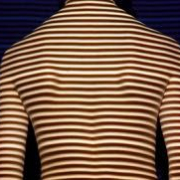A Brace classification study
The study Brace Classification Study Group (BCSG): part one – definitions and atlas, published by Scoliosis and Disorders, represents the first part of the SOSORT consensus in addressing the definitions and providing a visual atlas of bracing.
Prof. Stefano Negrini, Scientific Director of Isico, is one of the authors who belong to a panel of professionals named the Brace Classification Study Group.
Prof. Negrini explains: “The current increase in types of scoliosis braces defined by a surname or a town makes scientific classification essential. Currently, it is a challenge to compare braces and specify the indications of each brace. A precise definition of the characteristics of current braces is needed“.
As such, the International Society for Scoliosis Orthopedic and Rehabilitation Treatment (SOSORT) mandated the Brace Classification Study Group (BCSG) to address the pertinent terminology and brace classification.
The BCSG introduced several pertinent domains to characterize bracing systems.
The domains are defined to allow for analysis of each brace system. The BCSG has reached a consensus on 139 terms related to bracing and has provided over 120 figures to serve as an atlas for educational purposes.
During the annual meeting of the International Society for Scoliosis Orthopedic and Rehabilitation Treatment (SOSORT) in Athens in 2008, Prof. Negrini presented a new classification under the acronym BRACE MAP.
BRACE MAP derives from the following terms: Building, Rigidity, Anatomical classification, Construction of the Envelope, Mechanism of action, and Plane of action. Each item was composed of two to seven classificatory elements defined using one or two letters in order to refer specifically to the characteristics of the brace throughout the classification.
“A visual atlas of various brace types is provided – ends prof. Negrini – This is the first clinical terminology tool for bracing related to scoliosis based on the current scientific evidence and formal multidisciplinary consensus”.











Leave a Reply
Want to join the discussion?Feel free to contribute!